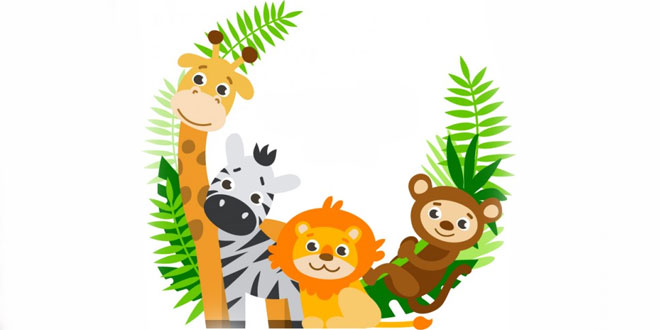Question: Define Habitat and Adaptation.
Answer: Habitat: The area where a particular animal naturally lives is called habitat.
Adaptation: The changes in the feature or behavior of an organism that help it to survive in its habitat is called adaptation.
Question: What does a habitat provide to an animal?
Answer: Habitat provides air, water, food and shelter to an animal.
Question: Name any three breathing organs in animals.
Answer: The three breathing organs in animals are:
- Nose
- Moist Skin
- Spiracles
Question: Describe the different types of habitat listing their special features.
Answer: The different types of habitats are:
- Forest: It is a large area that is covered by trees and plants. Forest provides shelter to a large number of animals. For example – lion, tiger, monkey etc.
- Desert: A desert is a dry, often sandy region that receives very little rainfall. It is usually very hot during the day and very cold during the night. water is hard to find in deserts. Animals found in deserts are Camel, rattlesnake and ground squirrel.
- Polar Regions and Mountains: The polar regions – Antarctica and Arctic and high mountains are extremely cold and covered with snow. Penguin, seal and Walrus are found in Polar regions.
- Ocean: The ocean is a large, continuous body of salt water that covers two-third of the earth’s surface. It is the world’s largest habitat. It is divided into Pacific Ocean, Atlantic Ocean, Indian Ocean, Arctic Ocean and Southern Ocean. A large variety of fish are found in the ocean. Whale, Octopus and jelly fish are few to name.
- Fresh Water: Rivers, Lakes and Ponds are example of freshwater habitat. Some animals live in water for example fish and shrimp. Some animals live both on land and water they are called amphibians for example frog and salamander.
Question: Describe the different body coverings of animals with examples.
Answer: The different body coverings of animals are:
- Scales: Fish are covered with a layer of flexible, overlapping scales. The bodies of reptiles like snake, crocodile and lizard too are covered with scales. most reptiles have horny scales that prevent water loss from their bodies.
- Shell: Animals like snail, tortoise and turtle are protected by a shell. These animals withdraw their head and feet into the shell when they sense danger.
- Wool or Fur: Mammals like the sheep and bear have special body coverings. A sheep’s body is covered with wool and bear’s body is covered with fur. These coverings protect them from rain and cold.
- Feathers: Birds are covered with feathers. Feathers help them to fly. They also protect the birds from rain and cold.
Question: Explain how animals are adapted to move in different ways.
Answer: Different types of animals have different types of organs to move like:
- Animals like dogs and cats move with the help of their legs.
- Birds fly with the help of their wings.
- Most snakes move with the help of scales on the underside of their body.
- Fish, dolphin and whales swim with the help of fins.
- Penguins and seals have flippers which help them to swim.
- Frogs hop around using their strong back legs. Their webbed feet help them to swim.
Question: Define Moulting, Camouflage, spiracles.
Answer: Moulting: Shedding of skin to acquire new one is called moulting. For example snake shed their skin periodically and these are replaced by the new ones.
Camouflage: Body covering of some animals match their surroundings. This mechanism is called camouflage. it makes the animal hard to spot and protects it from enemies. Some animals can even change their colour to match the surroundings. for example: chameleon.
Spiracles: Insects breathe with the help of a series of tiny holes along the side of their bodies. These holes are called spiracles. For example: for example spider and Indian moon moth.
 Class Notes NCERT Solutions for CBSE Students
Class Notes NCERT Solutions for CBSE Students


